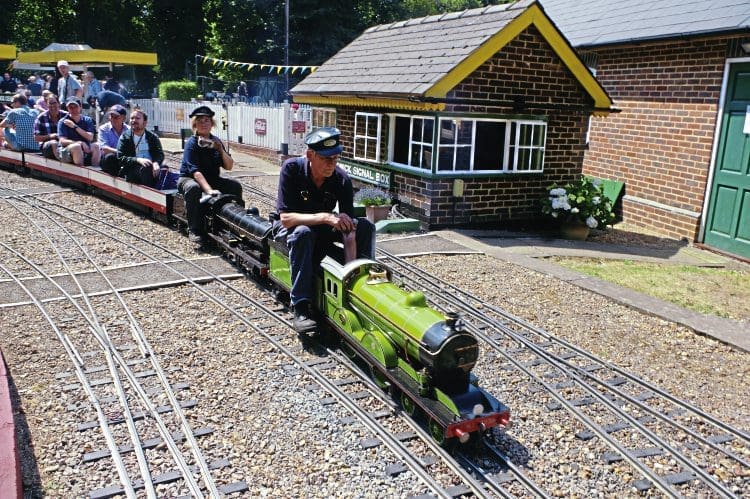The weeks ahead will see several special events and railtours to mark the 50th anniversary of the last steam train run over the main line by BR, the ‘Fifteen Guinea Special’ on August 11, 1968, and to mark the occasion, our special issue this month contains two features from photographers who were there to witness it.
We also have two features on the rebirth of steam half a century ago – that magnificent eight-day gala at the Keighley & Worth Valley Railway, and the opening in September 1968 of the marvellous main line in miniature system that is the Great Cockcrow Railway in leafy Surrey.

Of course celebrating half centenaries is one thing, but September is also set to see a phenomenal part of world railway history being remade. It is then that we are likely to see the rebuilt North Eastern Railway petrol-electric autocar being relaunched.
Enjoy more Heritage Railway reading in the four-weekly magazine.
Click here to subscribe & save.
The body was sold for use as a holiday home near Kirkbymoorside on the North Yorkshire Moors Railway, and was forgotten for decades, its colossal importance in the evolution of railways overlooked.
Yet it is this vehicle and its long-scrapped twin that form the bridge link between the steam era and that of modern traction. They were developed around the same time that other railways were introducing steam railmotors as a means of running branch line trains as economically as possible by eradicating the need for locomotives to run round.
The NER’s assistant chief mechanical engineer Vincent Raven took this concept one stage further. He looked at the electric trams making their debut on city streets and saw the concept’s advantages over those of steam.
However, instead of taking a power supply from overhead lines, his autocars carried their own power plant with them, in the form of a petrol engine driving a dynamo which supplied power to the electric motors. They were the world’s first passenger-carrying trains powered by internal combustion, and paved the way for DMUs, which today comprise a sizeable slice of the world’s everyday trains.
In this respect, the NER autocars are in terms of historical landmarks easily as important as Stephenson’s Rocket.
Just as Rocket was by no means the world’s first steam locomotive but set the blueprint for the development of steam locomotive technology, so the NER autocars were the roots of modern traction, half a century ahead of their time, as BR did not introduce DMUs until the 1950s.
It is impossible to praise enough the efforts of coach restorer extraordinaire Stephen Middleton and the 1903 Autocar Trust which he set up in their efforts to bring this priceless piece of world transport historic back into the public glare and use.
Those who watched Channel 4’s Great Rail Restorations will be familiar with Stephen’s work on historic carriages – but as the saying goes, you ain’t seen nothing yet.
So in this year that we are remembering the end of BR standard gauge steam haulage, we will also be marvelling at a vehicle which sounded the death knell for steam 65 years before!
On another tack, I am delighted to hear that fellow Beach Boys fan David Buck is now the owner of Steam Dreams, one of Europe’s top railtour companies.
It seems just like yesterday when, a few months before the first issue of Heritage Railway, I discussed the firm’s founder Marcus Robertson’s vision for walk-on steam trips from London with him.
Steam Dreams and its ‘Cathedral Expresses’ went on to be a rip-roaring success story and acquired a reputation for style, comfort and reliability second to none, and now Mayflower owner David is at the helm, who knows to what further heights it will ascend?
Never mind August 11, 1968, steam is still very much here, and going from strength to strength.
Robin Jones, Editor
Advert
 Enjoy more Heritage Railway reading in the four-weekly magazine. Click here to subscribe.
Enjoy more Heritage Railway reading in the four-weekly magazine. Click here to subscribe.




